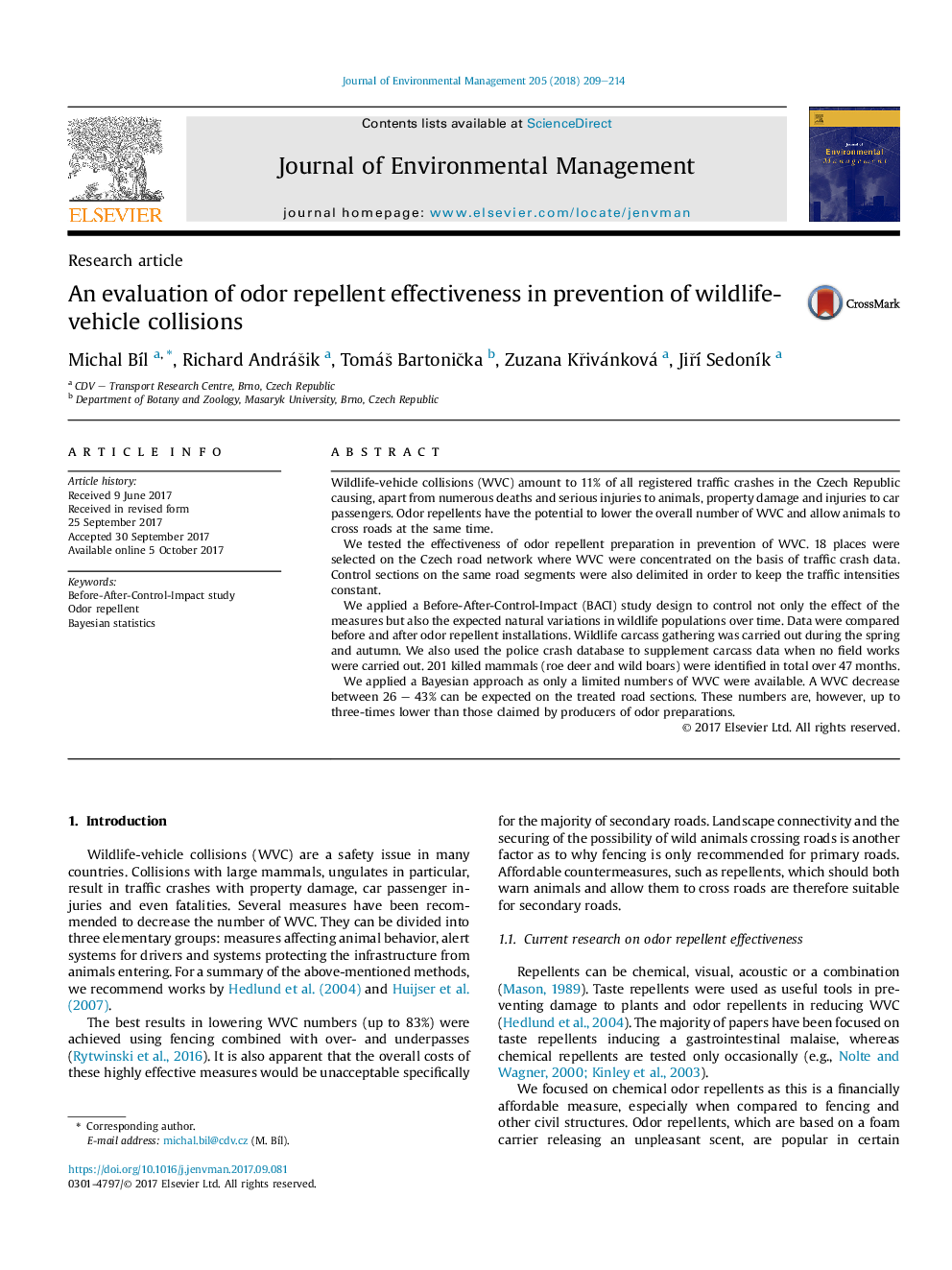| Article ID | Journal | Published Year | Pages | File Type |
|---|---|---|---|---|
| 5116223 | Journal of Environmental Management | 2018 | 6 Pages |
â¢We tested the effectiveness of odor repellent preparation in prevention of WVC.â¢201 killed mammals (roe deer and wild boars) were identified in total over 47 months.â¢A WVC decrease between 26 - 43% can be expected on the treated road sections.
Wildlife-vehicle collisions (WVC) amount to 11% of all registered traffic crashes in the Czech Republic causing, apart from numerous deaths and serious injuries to animals, property damage and injuries to car passengers. Odor repellents have the potential to lower the overall number of WVC and allow animals to cross roads at the same time.We tested the effectiveness of odor repellent preparation in prevention of WVC. 18 places were selected on the Czech road network where WVC were concentrated on the basis of traffic crash data. Control sections on the same road segments were also delimited in order to keep the traffic intensities constant.We applied a Before-After-Control-Impact (BACI) study design to control not only the effect of the measures but also the expected natural variations in wildlife populations over time. Data were compared before and after odor repellent installations. Wildlife carcass gathering was carried out during the spring and autumn. We also used the police crash database to supplement carcass data when no field works were carried out. 201 killed mammals (roe deer and wild boars) were identified in total over 47 months.We applied a Bayesian approach as only a limited numbers of WVC were available. A WVC decrease between 26 - 43% can be expected on the treated road sections. These numbers are, however, up to three-times lower than those claimed by producers of odor preparations.
